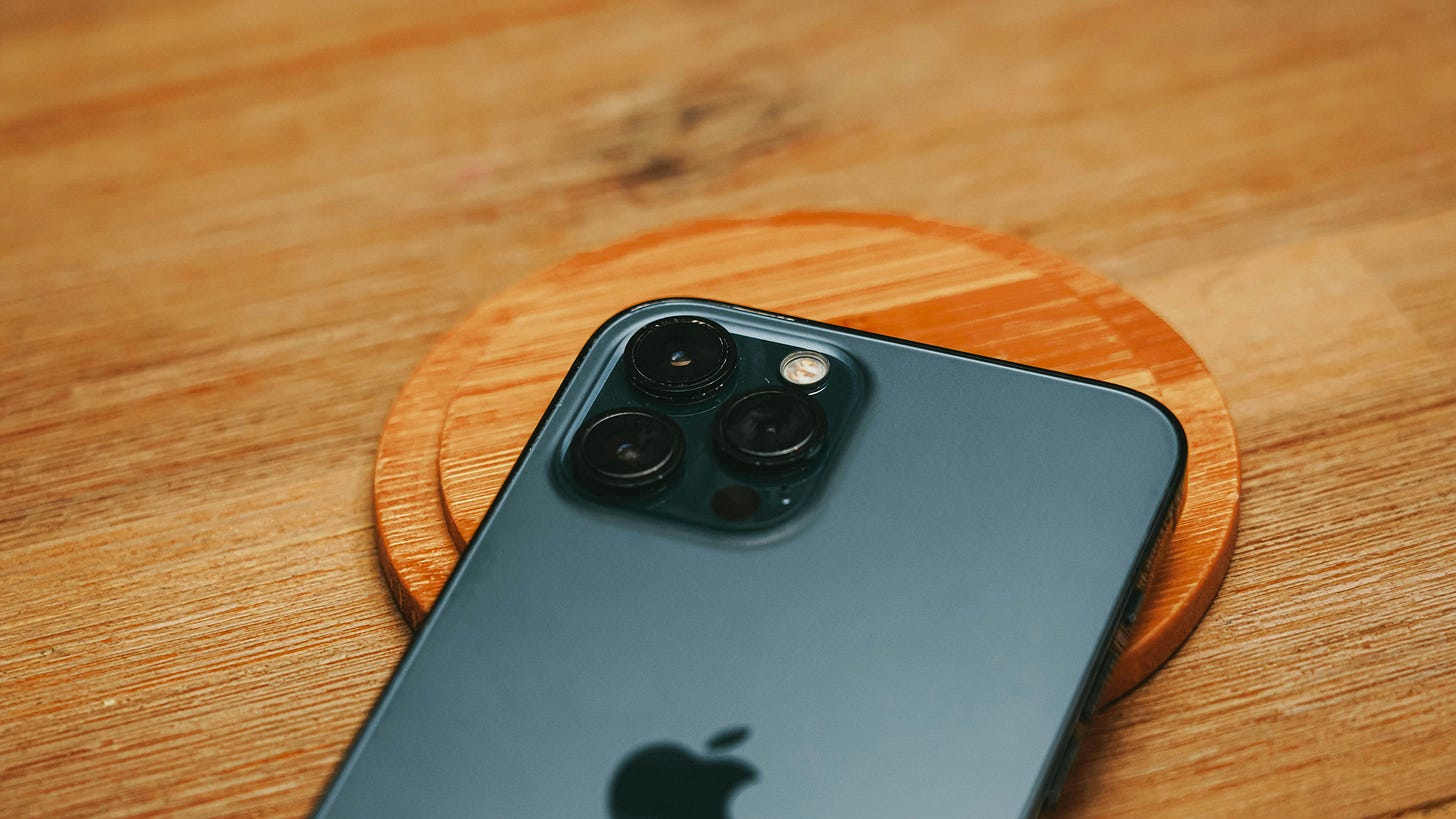
Last week, I found myself scrolling YouTube for something to watch while I stood in front of my dishwasher that needed to be unloaded.
My interior voice told me, You don’t need to listen to something. You need to do the dishes. I continued to scroll. By the time you find something, you could have unloaded it. I scrolled faster in protest. Who’s controlling who here?
That voice was right. My phone had become my master, and I knew it.
I thought I was doing alright.
I already keep my iPhone home screen in grayscale as many minimal phone gurus suggest. (Admittedly, I do so to enhance dark mode which is my zen.)
I don’t use social media (unless you count Substack Notes, which I go days without checking.) Brain-rotting apps like TikTok have never tainted my app library.
So why was I carrying around this device as if it were glued to my hand?
Put simply, I was a content glutton.
Learning can be a vice.
My weakness, unlike typical digital junkies, has been video essays and educational content (with the occasional Severance theory deep-dive thrown into the mix.)
I love learning. As a mom, I try to find moments of my day to multi-task a household chore with my own studies: folding laundry to a podcast interview, picking up toys to a video on classic philosophy.
But it was when my phone stopped me from doing the dishes that I had to face my addiction.
Turns out, I’ve been babysitting my phone.
My iPhone seemed to have control over me the same way a small child did.
I needed to keep up with it, so I carried it around with me. I needed to answer its calls. I needed to look at its face.
If I set it down somewhere and couldn’t find it, I’d look for it like a mother paging for her toddler in a Walmart.
But it isn’t a child. It didn’t need me.
And more and more, I was realizing I needed to let it go.
I ended my habit cold-turkey with a block of wood.
No, I didn’t smash my phone with it.
This block of wood has a slit cut to hold up a phone. It is the most basic phone stand possible. No charging. No plugs.
It’s just a thin block of wood that holds my phone.
I put it on my desk, just slightly behind my computer. My phone just sits there now on silent.
The block of wood is the babysitter.
I am the master of myself again.
In the morning, I may check the weather or my emails. Then, the phone goes on the wooden stand. (Consider this dropping the device off at daycare.)
If I need to check the internet, I use my computer. This is also where I work on my creative projects, plan curricula, and learn in a less gluttonous, more intentional way.
I’ve had so much thinking space without my phone attached to me that I am actually happy with distraction-less dish work. (And who knew you can do laundry without listening to a discussion on Tolstoy?)
I’m building living room tents with my kids.
I’m making progress on my projects.
I’m writing a Substack post.
In the evening, I pick up my phone and give myself time to check YouTube.
Is it really this simple?
Yes. It is.
You might not need an app, or a gray-scale screen, or a Screen Time limit.
Maybe it’s not you who needs Parental Controls.
It’s your phone.
Your phone is simulating a parent-child attachment.
Give that device a place to live and stop babysitting it.




This is such a powerful reflection—and honestly, so validating. What you describe here mirrors what cognitive scientists have been sounding the alarm on: our devices aren't just tools, they're designed to hijack our dopaminergic reward systems—especially when we use them for even “wholesome” things like learning. The brain doesn’t always distinguish between junk and nutrient-dense content when it comes to stimulus overload.
The comparison to a parent-child relationship is so apt. Behavioral psychologists have studied how intermittent reinforcement (like surprise notifications or “just one more” autoplay videos) builds the same kind of compulsive checking behaviors seen in variable-ratio reward systems—like slot machines.
It’s not weakness. It’s wiring. And your solution—a designated “babysitter” stand—is brilliant in its simplicity. Just creating a physical boundary can reestablish cognitive control and reduce attentional residue. Loved this piece and the intentionality behind it. Here’s to making the world A Little Bit Kinder. 📵🧠💛
The first thing to make me realize my brain was rewiring from needing constant stimulation during my phone detox was me realizing how I was able to work in silence with so much ease. I could drive to and from work, cook dinner, clean my entire house, with nothing but my own thoughts.